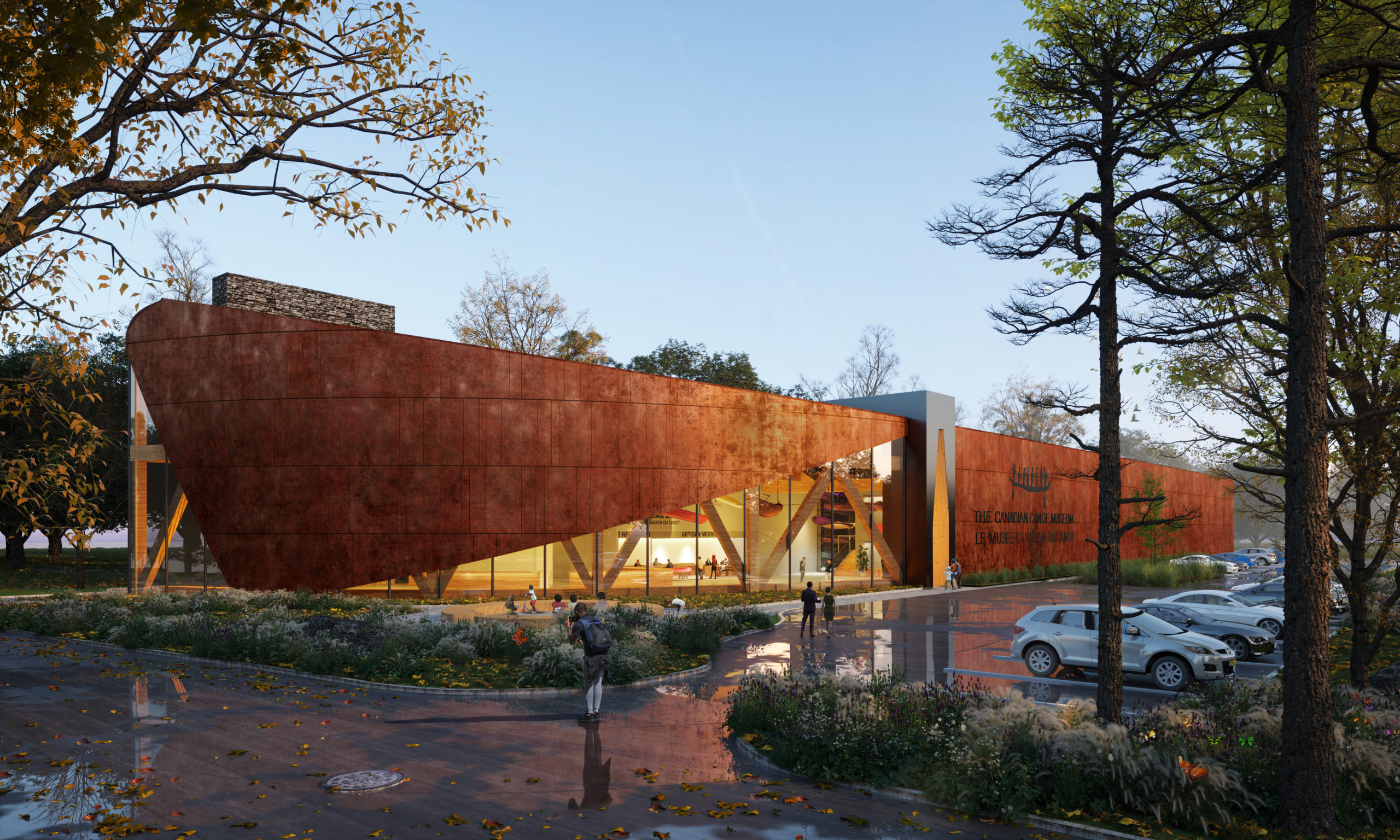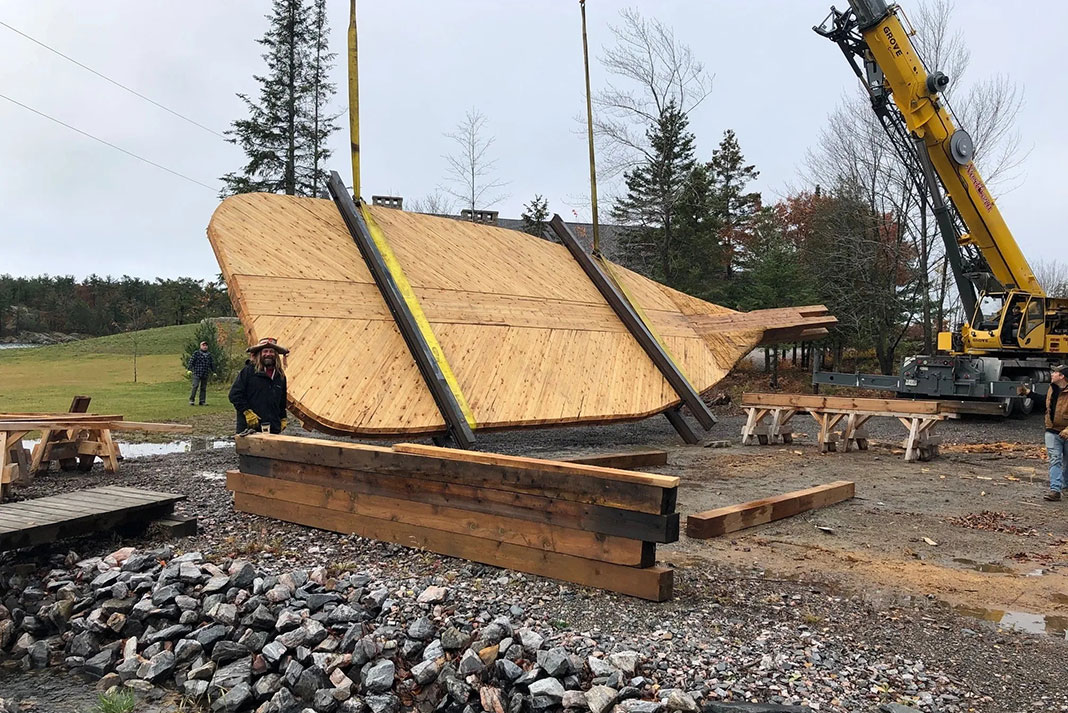A grand portage is underway at the Canadian Canoe Museum in Ontario. Since the museum’s beginning in 1997, the growing collection of floating watercraft has made its home in a former outboard motor factory within the town of Peterborough. Now, after years of planning, the Canadian Canoe Museum is beginning to haul the world’s most extensive canoe collection with over 600 crafts across town to a new location most befitting on the eastern edge of Little Lake along the Otonabee River in a campaign called, “Move the Collection.”
The Canadian Canoe Museum recently completed its first, “Big Lift,” removing a 450-pound replica of a fur trade-era Montreal canoe. Within the months ahead, the museum will be preparing and beginning to move every craft plus 500 paddles, among other items, to the site on Little Lake.

The Canadian Canoe Museum’s big move
“The move to the water is transformational,” shares Executive Director Carolyn Hyslop, who has led the museum since 2016.
The new home of the Canadian Canoe Museum will provide enough space to display the entirety of its collection to the public, who previously only saw 20 percent of the watercraft and paddling artifacts warehoused. This includes ancient dugouts, and centuries-old birch bark canoes, which Hyslop admires for the Indigenous craftsmanship making use of surrounding resources to produce designs of near perfection. Peterborough itself sits within the traditional territory of the Williams Treaties First Nations.
The new building also provides museum-purpose conditions, with the ability to regulate temperature and humidity.

For Hyslop, perhaps the most significant direct benefit to visitors of the new museum will be the setting on the shore of Little Lake. This will allow the Canadian Canoe Museum to expand its programs taking place on the water and adjacent land. Bridging visitors to the paddling artifacts through more participatory experiences.
“We will be able not just to immerse people in the collection but directly to the outdoors,” Hyslop adds.
To do so, Hyslop and the museum must first undergo the task of transporting 600 canoes across town. This includes watercraft over 53 feet long and weighing 1,000 pounds. You may have the same idea we do of making a trek to Ontario, rolling up our flannel sleeves and hoisting boats overhead to form a two-mile-long portage party. But as artifacts, each canoe is assessed individually for its proper packaging and transporting needs.

The first Big Lift of the 450-pound canoe from the soon-to-be former museum site required a crane, as others will. Every boat too big to get through the front doors of the canoe museum has to be hoisted out of a second-story hatch of the old outboard motor factory. That’s how the fur trade-era canoe entered the building 22 years ago and recently made its exit.
“It’s a place of story. Canoes and kayaks connect us to heritage, art and language.”
A team of movers hoisted the canoe by pulley at three points for even distribution. Then placed a cart and set of tracks under it. This allowed them to push it outside the second story onto an aptly named “shuttle” on a set of scaffolding.
The crane lowered the canoe shuttle from the scaffolding onto a trailer which was then towed to a storage facility for documentation and temporary holding until the new museum is ready to receive the canoes.
The immeasurable value of a place of story
Moving the collection is a time-consuming and costly endeavor within the opening of the new location. The Canadian Canoe Museum has raised 95 percent of the overall museum project’s $40 million funding goal. At this point, Hyslop implores that the most significant contribution the paddling community can provide to Move the Collection are donations to help them reach the project’s financial milestone and secure the new museum opening for future generations of paddlers to visit.
To Hyslop, the Canadian Canoe Museum serves as a unique place of value to the past, present and future of not just canoeing but the culture surrounding it.
“It’s a place of story,” Hyslop says. “Canoes and kayaks connect us to heritage, art and language. Through the collection, we strive to be a platform for voices and stories to be shared from Indigenous communities. And it provides a place of finding community.”
According to the Canadian Canoe Museum collection preparations have been ongoing since last summer and now increasing substantially. In the next three months, the museum team will begin moving the collection to the new museum.
Learn more about the Canadian Canoe Museum and how to support Move the Collection.
Making the “Big Lift” of one of the Canadian Canoe Museum’s 600 boats to be transported to their new location. | Feature photo: Courtesy Canadian Canoe Museum




